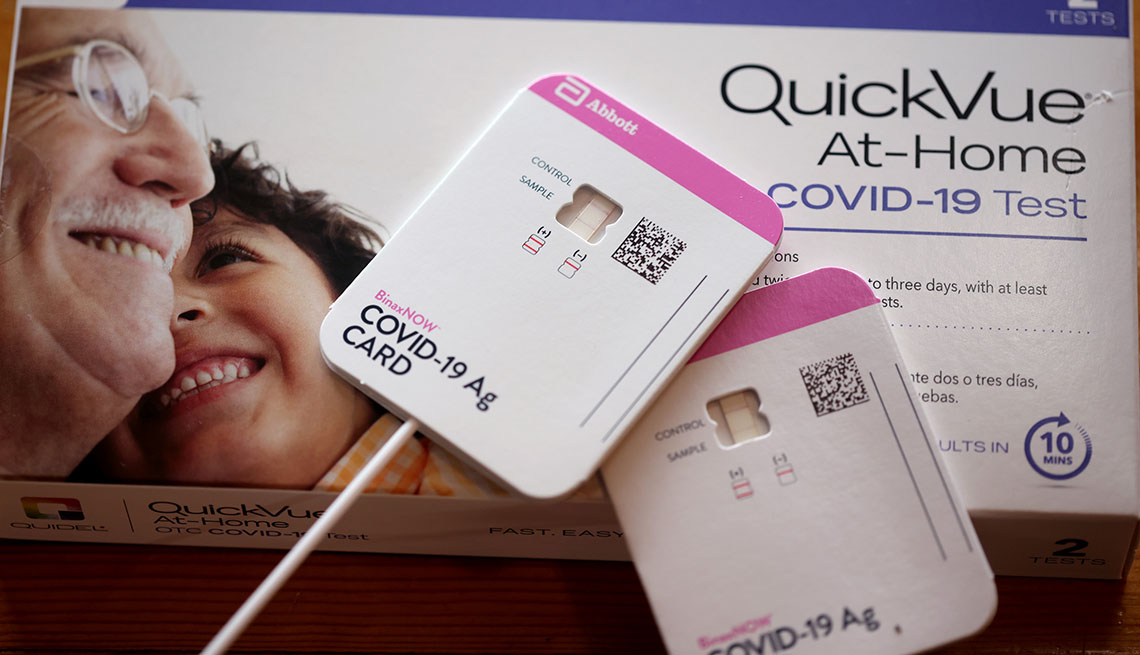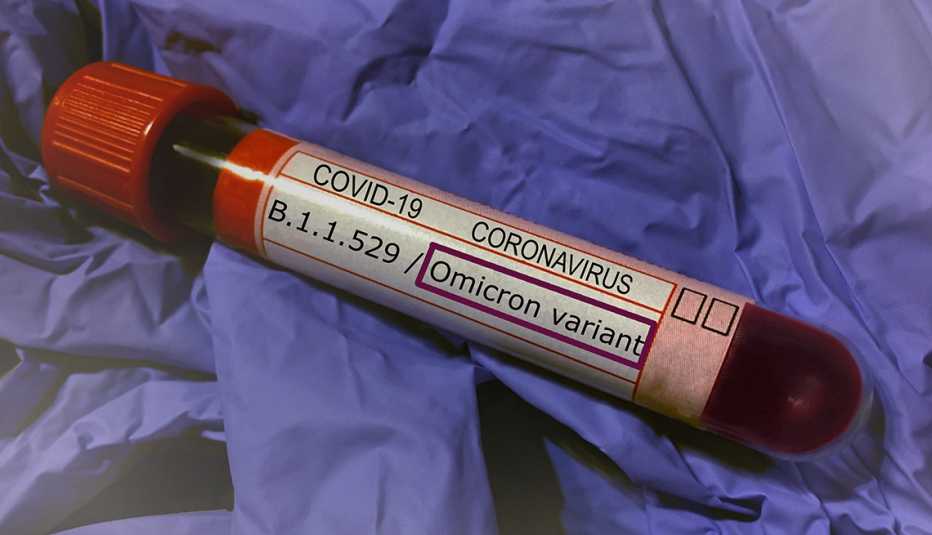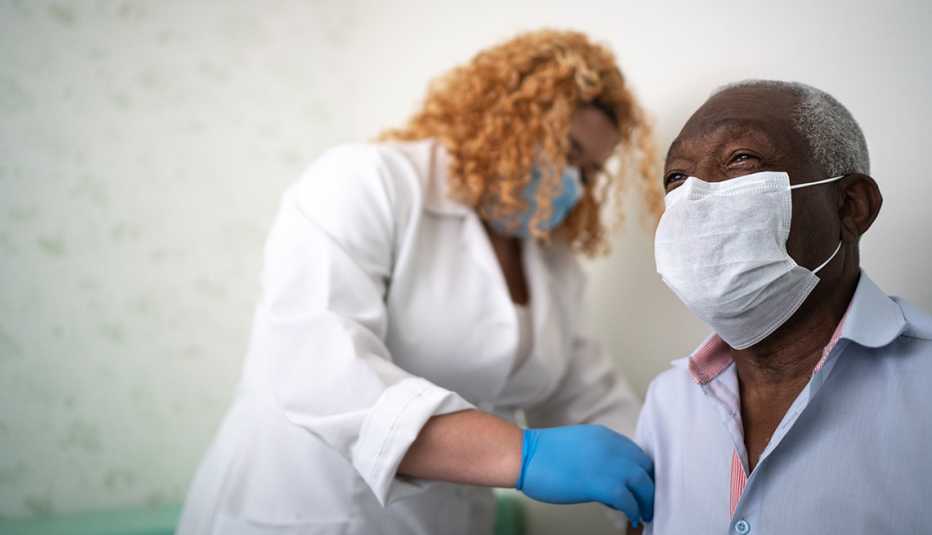“I tend to like the tests that give me the results sooner, because oftentimes if I'm using a rapid test, it's because I'm on my way somewhere and I want to know whether or not I've got the virus,” Kissler says. “So a test that gives me a return in 10 or 15 minutes is a little bit more convenient for me than a test that takes an hour.”
Ease of use is another factor to consider when selecting a test. Some kits require weaving a long swab through a card-shaped reader; others call for dunking a test strip in a vial of solution. “It's sort of a matter of personal preference,” Kissler notes.
Tips for taking a COVID test at home
- Make sure the test you purchased has emergency use authorization from the FDA. This should be clearly marked on the box.
- Check the expiration date, also printed on the box, and make sure the test has not expired.
- Wash your hands and make sure you have a clean surface on which to perform the test.
- Follow the instructions provided by the manufacturer. Johns Hopkins’ Gigi Gronvall also suggests looking to see if the test maker has a demonstration video online, which can help you become familiar with the process.
- If your self-test is positive, tell a health care provider, who can help you determine next steps. You should also stay home and away from other people.
- If your test kit recommends serial testing, follow instructions for when to perform the second test.
Source: CDC
How accurate are COVID home test results?
It’s true that PCR tests are more sensitive than antigen tests, meaning you’re less likely to receive a false negative if you go that route. But antigen tests “are very accurate when you are most infectious,” Gronvall says. “They're actually equivalent to PCR for that time period when you are most dangerous to others.” A recent study led by researchers at the Johns Hopkins University School of Medicine found that the coronavirus was accurately detected by rapid antigen tests in 87 percent of hospital patients with symptomatic COVID-19 and 71 percent with asymptomatic cases of the illness. When it comes to omicron, the FDA issued a statement in late December that said antigen tests do detect the new variant, “but may have reduced sensitivity.”
False positives are rare with rapid antigen tests, Gronvall adds. So if you test positive with an at-home test, you likely have COVID and should isolate yourself from others. You can always confirm the diagnosis with a follow-up PCR test or another antigen test, since "the accuracy of your result goes up with multiple tests,” Gronvall explains.
If the results are negative, it means the test didn’t detect the virus, but it doesn’t rule out infection completely, the CDC says. It could be that your infection is in the early stages and you don’t have enough virus in your sample for the test to turn positive. Repeating the test at least 24 hours later will paint a clearer picture. Some home kits come with two tests for this very reason.
“Of course, [home tests] don't bring the risk of bringing infection to a gathering down to zero, but they do reduce the odds by an awful lot,” Kissler says. And remember: A negative test is just a snapshot of your status at that moment in time. “[It] really doesn't clear you for very long — basically just that day and maybe the next day,” he adds.
What else should I keep in mind?
Testing, whether it’s done at home or in a health clinic, isn’t a substitute for other prevention measures, like vaccines, masks and physical distance. It’s just another risk-reduction strategy that can help keep people, especially high-risk individuals, safe while the virus continues to circulate at high levels.
Kissler is hopeful there will be at-home testing options for respiratory illnesses beyond COVID, such as flu. They could go a “long way” toward keeping schools and workplaces running smoothly, he says. But in the meantime, all eyes are on the ability for fast and convenient testing to curb winter surges by stopping the spread of COVID, especially as people get together in person.
“We know that super-spreader events, where a single infection infects many others, really drives the spread of this virus hugely. And rapid antigen tests can really reduce the odds of something like that happening,” Kissler says.
At-Home Tests for Travelers
by Bill Fink
You can use a rapid antigen test to regain entry into the U.S. after traveling abroad, but you’ll need to do your homework. Not every COVID test sold over the counter is accepted under the federal government’s order. For starters, the tests approved for international travel must “include a telehealth service affiliated with the manufacturer of the test that provides real-time supervision remotely through an audio and video connection,” according to the CDC. This means you’ll need a good WiFi connection so a designated medical professional can watch you administer the test and observe the results.
Self-tests deemed acceptable for international travel also must be able to produce approved documentation to share with airline and customs officials and they must be authorized by the FDA or the relevant national authority where you’re taking the test. The good news is that several companies have released FDA-authorized self-tests that meet the CDC’s re-entry requirements, including Abbott’s BinaxNOW home test with telehealth service ($70 for a two-pack) and Qured’s Quidel QuickVue video supervised rapid test ($45).
Traveling without a test? Check with your hotel about options. Many international hotels offer approved and supervised tests for their guests free of charge — it’s almost becoming a standard part of the check-out process. Local clinics and some airports offer CDC- and airline-approved tests as well, although costs and availability vary widely. Whatever your testing plan, make sure to check the latest CDC travel and testing requirements before your trip — you don’t want to be denied access to your return flight with an unapproved test.




































































